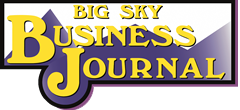Commercial
Baucke, Kathleen/Sprague Construction Roofing Division, 1341 Avenue D, Com Fence/Roof/Siding, $11,600
HS Management LLC, 575 Lincoln Ln, Com Footing/Foundation, $190,000
Aviation Properties LLC/EEC Inc, 3485 A J Way, Com New Other $1,806,647
AT&T, 2851 King Ave W, Com Remodel, $10,000
SFH LLC/Wyman Construction, 1509 Main St, Com Remodel, $30,000
Centennial Park/Timber Carpentry LLC, 3302 Howard Ave, Com Fence/Roof/Siding, $4,000
City Of Billings The/Timber Carpentry LLC, 2100 Avenue C, Com Fence/Roof/Siding, $12,000
Joshua LLC/Lennick Bros. Roofing & Sheetmetal, 823 N 27th St, Com Fence/Roof/Siding, $15,000
McCall Homes/McCall Development, 1625 Annafeld Pkwy E, Com New Other, $2,275,000
Fagg Family Properties LLC/Jones Construction, Inc, 235 N 32nd St, Com New Other, $500
McDonnell Family Irrevocable T/Raisin Contracting Inc, 408 N 15th St, Demolition Permit Commercial, $6,000
SBA Communications, 2132 Grand Ave, Com Addition, $50,000
Reger, James R & Deborah C, 1601 S Shiloh Rd, Com Addition, $50,000
Market Place West Partners LLC/Summit Roofing Inc, 2821 King Ave W, Com Fence/Roof/Siding, $138,800
MLC Ranch LLC/Perfect 10, 111 N 31st St, Com Fence/Roof/Siding, $180,000
Apartments Delaware L/Dutton Construction, 1607 17th St W Avenue C, Com Fence/Roof/Siding, $723,895
1400 S 24th LLC, 1420 S 24th St W, Com Footing/Foundation, $360,000
St John’s Foundation/Van Arsdale, Duane Constr Inc, 502 N 30th St, Com Remodel $30,000
Zoo Montana Inc/T.W. Clark Construction LLC, 2100 S Shiloh Rd, Com Remodel, $50,000
Aaron Brdt, 1008 Shiloh Crossing Blvd, Com Remodel, $95,305
Rocky Plaza Association/T.W. Clark Construction LLC, 1400 Poly Dr, Com Remodel, $4,500
Dude Rancher Lodge/Red Bear Contracting, 415 N 29th St, Com Remodel $2,100
Residential
Copper Ridge West Inc/Infinity Home LLC, 3140 Forbes Blvd, Res New Single Family, $212,912
Better Building Technologies/MJH Construction, 2116 Entrada Rd, Res New Single Family, $232,000
Wagenhals Enterprise Inc/Wagenhals Enterprises Inc, 1106 Daybreak Dr, Res New Single Family, $248,285
Infinity Homes/Infinity Home LLC, 2140 Entrada Rd, Res New Single Family, $250,214
McCall Development Inc/McCall Development, 1954 Annas Garden Ln, Res New Single Family,$436,118
McCall Development Inc/McCall Development, 1708 Annas Garden Ln, Res New Single Family, $201,046
Wagenhals Enterprises Inc/Wagenhals Enterprises Inc, 5505 Morning Star Ln, Res New Single Family, $270,000
McCall Homes/McCall Development, 6127 Eva Marie Ln, Res New Single Family, $188,362
McCall Homes/McCall Development, 6114 Johanns Meadow Ln, Res New Single Family, $157,125
Robert & Carol Jones Living Trust/Blake Construction, 1749 Mariposa Ln, Res New Accessory Structure, $65,000
CDH, LLC/ CDH, LLC, 2204 Gleneagles Blvd, Res New Single Family $333,126
CDH, LLC/ CDH, LLC, 835 Beringer Way, Res New Single Family, $291,448
CDH, LLC/CDH, LLC, 2202 Greenbriar Rd, Res New Single Family, $276,921
McCall Homes/McCall Development, 6125 Johanns Meadow Ln, Res New Single Family, $268,522
Jaime Nelson, 6251 Canyonwoods Dr, Res New Single Family, $440,000
Sunset Construction LLC/ Goggins, Zack J, 1702 Avenue C, Demolition Permit Residential, $1,500
815 N 31st Street LLC/Digger Excavation Inc, 815 N 31st St, Demolition Permit Residential, $10,000
Svec, Joel F & Erica J/Bruechert Custom Homes, 4948 Silver Creek Trl, Res New Single Family, $286,314
Trevor Sherner/Had Inc, 5204 Grass Mountain Rd, Res New Single Family, $333,702
Trevor Sherner/Had Inc, 2237 Entrada Rd, Res New Single Family, $262,189
Conlon, Jalene/Ban Construction Corp, 2121 S Stone Creek Trl, Res New Single Family, $634,428
Andersen, William R/Anderson Management Group, 4213 Woodgrove Dr, Res New Single Family, $440,500
Design Builders, Inc/Design Builders, Inc., 2529 Buffalo Ridge Trl, Res New Single Family, $329,886
McCall Homes/McCall Development, 1949 Annas Garden Ln, Res New Single Family, $236,916.


